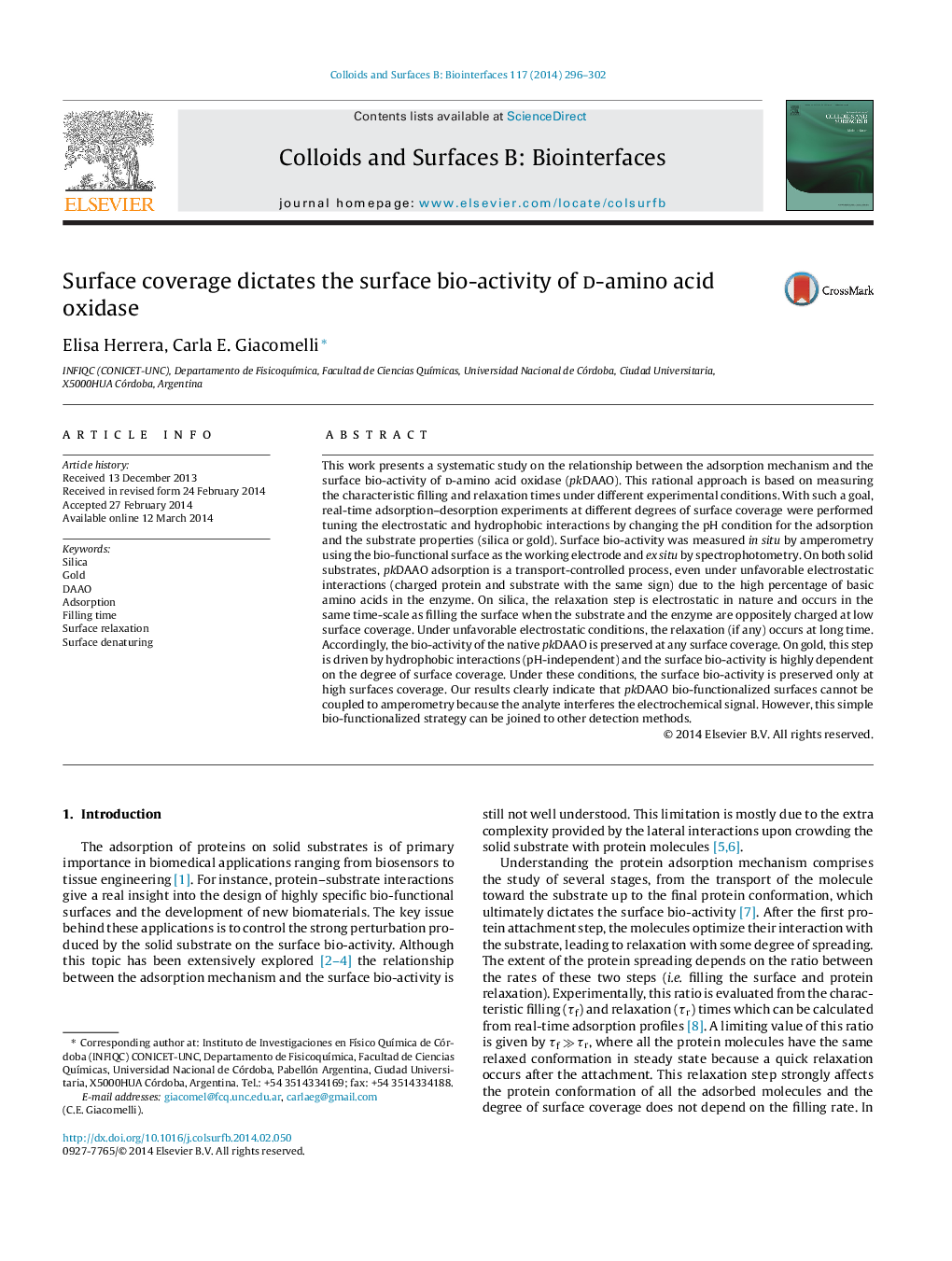| Article ID | Journal | Published Year | Pages | File Type |
|---|---|---|---|---|
| 599920 | Colloids and Surfaces B: Biointerfaces | 2014 | 7 Pages |
•The adsorption of pkDAAO on silica and gold is a transport-controlled process.•Relaxation is electrostatically driven on silica: pH and surface coverage dependant.•Relaxation is hydrophobically driven on gold: surface coverage dependant.•Surface bio-activity correlates with the extent of the relaxation step.•Amperometry cannot be coupled to pkDAAO bio-functionalized electrodes.
This work presents a systematic study on the relationship between the adsorption mechanism and the surface bio-activity of d-amino acid oxidase (pkDAAO). This rational approach is based on measuring the characteristic filling and relaxation times under different experimental conditions. With such a goal, real-time adsorption–desorption experiments at different degrees of surface coverage were performed tuning the electrostatic and hydrophobic interactions by changing the pH condition for the adsorption and the substrate properties (silica or gold). Surface bio-activity was measured in situ by amperometry using the bio-functional surface as the working electrode and ex situ by spectrophotometry. On both solid substrates, pkDAAO adsorption is a transport-controlled process, even under unfavorable electrostatic interactions (charged protein and substrate with the same sign) due to the high percentage of basic amino acids in the enzyme. On silica, the relaxation step is electrostatic in nature and occurs in the same time-scale as filling the surface when the substrate and the enzyme are oppositely charged at low surface coverage. Under unfavorable electrostatic conditions, the relaxation (if any) occurs at long time. Accordingly, the bio-activity of the native pkDAAO is preserved at any surface coverage. On gold, this step is driven by hydrophobic interactions (pH-independent) and the surface bio-activity is highly dependent on the degree of surface coverage. Under these conditions, the surface bio-activity is preserved only at high surfaces coverage. Our results clearly indicate that pkDAAO bio-functionalized surfaces cannot be coupled to amperometry because the analyte interferes the electrochemical signal. However, this simple bio-functionalized strategy can be joined to other detection methods.
Graphical abstractFigure optionsDownload full-size imageDownload as PowerPoint slide
